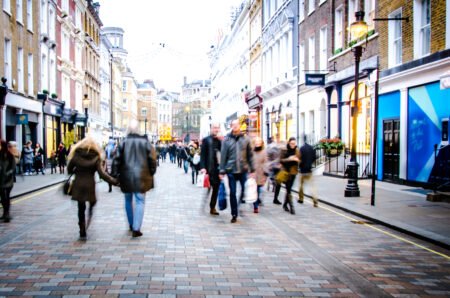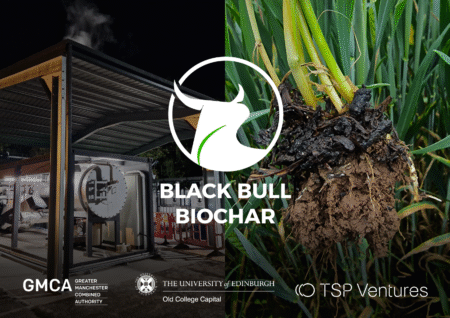Net-zero-energy (NZE) buildings were the focus at a recent conference in California, a state that has mandated that all new residential buildings achieve NZE status by 2020. In addition, all new commercial buildings must be net-zero energy by 2030, and 50 percent of the existing commercial structures must be retrofitted to the same standard the same year.
Experts from the fields of engineering, design, and construction, as well as representatives of utility companies and a sustainable rating institute, presented a step-by-step approach to the NZE process during NZEB-C2: Net Zero Energy Building Conference, organized in August in Irwindale by the Verdical Group, a Los Angeles green building consulting firm. They also discussed integrated energy solutions and new technologies that can help buildings reach sustainability goals, and provided case studies that illustrate how various types of buildings had achieved NZE, even in climates with limited solar resources.
Two compelling case studies presented at the conference were multistory office projects that go beyond net zero to attain net-positive energy and water status: Seattle’s Bullitt Center, recently awarded Full Living Building Challenge (LBC) certification by the International Living Future Institute (ILFI), and Santa Monica’s proposed City Services Building, which is targeting Full LBC certification.
Full LBC certification, the most rigorous of the three sustainable rating programs offered by the ILFI, designates that a building has a “positive regenerative” or “restorative” impact on the environment, noted Brendan Cook, net-zero energy manager at the ILFI. A building must demonstrate at least 105 percent net-positive energy and water performance for 12 continuous months before it is awarded full certification. Only eight U.S. buildings have attained this level of sustainability, the largest of which is the Bullitt Center.
Any type of structure, including residential, public, or commercial, can achieve NZE, Cook said. The first and most important step is to reduce the building’s energy load through design, advanced technology, and operational strategies, he said.
Bullitt Center
Billing itself as the greenest commercial building in the world, Seattle’s $32.5 million, six-story office building, occupied by the nonprofit Bullitt Foundation, produces 244,000 kilowatt-hours (kWh) per year of energy and uses only 143,000 kWh—generating enough surplus energy to power eight homes. What is most remarkable about this is that the building achieves net-positive energy in an environment with limited year-round sunshine.
To attain NZE, the Bullitt Center’s energy use intensity (EUI) had to be 16,000 Btu per square foot, or 16, which required a 14,303-square-foot (1,329 sq m) photovoltaic array. To attain net-positive energy output, the building’s EUI was reduced to 13, explained architect Brian Court, a partner at the Miller Hull Partnership, the building’s designer. This was accomplished through an integrated energy-saving system that includes passive ventilation, ground-source heating, and natural daylighting. Court noted that Seattle’s energy code requires an EUI of 51, and an EUI of 32 is required for a Leadership in Energy and Environmental Design (LEED) Platinum rating.
Santa Monica City Services Building
Designers of Santa Monica’s proposed $57 million, 50,000-square-foot (4,600 sq m) City Services Building plan to apply strategies similar to those used at the Bullitt Center to achieve full LBC certification, according to Gideon Susman, a senior engineer at BuroHappold Engineering, the project’s sustainability consultant, and Joel Cesare, Santa Monica’s sustainable building adviser.
With a sunny southern California location and consistent ocean breezes that provide natural ventilation, the Santa Monica building could achieve net-zero energy with an EUI of 21.3 and a photovoltaic array of 18,200-square-feet (1,700 sq m).
Strategies to reduce the building’s energy and water demand include:
- a high-performance building envelope;
- natural ventilation, with a radiant slab and panels providing heating and cooling;
- thermostats set at 78 degrees Fahrenheit (26 C);
- electrochromatic glazing and shadow boxes on the glass facade to reduce solar heat gain and increase natural daylighting;
- LED lighting;
- sensors that adjust lighting and room temperature as needed; and
- water-saving fixtures, including composting toilets.
In addition to the Santa Monica building, which is scheduled for completion in fall 2019, nine other California buildings are registered for full LBC certification. So, though the City Services Building may not be the first in the state to achieve full LBC certification, it would be the largest and only public building in California to attain this “deep” green level of sustainability, said Martin Pastucha, director of the Santa Monica Public Works Department.
Santa Monica already requires new commercial buildings to be certified LEED Platinum, but the city is raising the sustainability bar even higher. “These are buildings of the future, and we want to demonstrate to others what can be done,” Pastucha said. “Our goal is to build the highest sustainable building within the budget identified. This is imperative to our evolution as a city and the world’s in general.”
A new technology used at the Bullitt Center, which will also be used at Santa Monica’s City Services Building, is the Envirolet FlushSmart composting toilet. This system converts waste to compost suitable for landscaping plants, said Pastucha. The fixture requires just of water per flush compared with for a standard low-flow toilet. This advanced eco sanitation system converts waste to compost using an Automatic Six-Way Aeration process. The end result is compost suitable for landscaping plants, notes Pastucha. This toilet fixture also eliminates human waste by converting it to compost material for plants. “We’re in the fourth year of a drought and, though it may improve, we’ll always be dealing with water issues in California,” Pastucha suggested, noting that this fixture requires just 0.05 gallons (0.2 liter) of water per flush compared with 1.2 gallons (4.5 liters) per flush for a standard low-flow toilet.
Santa Monica already has in place an efficient water collection and filtration system that collects rainwater and recycles water from the storm drainage system for irrigation and flushing toilets, as well as has an on-site well with a reverse osmosis filtration system. This water system, along with the building’s water-saving fixtures, is expected to reduce the structure’s water use by an additional 1 or 2 percent.
Craig Venter Research Facility
Also discussed at the conference was the J. Craig Venter Institute (JCVI), a medical research facility in La Jolla, California, heralded as the most sustainable laboratory facility in the world.
Designed to achieve LEED Platinum certification as well as net-zero energy and net-zero water use, it may also reach net-positive energy status. The JCVI generates all the power it uses on site, is carbon neutral without the purchase of carbon offsets, and captures 100 percent of its on-site rainwater, said architect Sean McGreal, a principal at ZGF Architects in Los Angeles, which designed the project.
Situated on a two-acre (0.8 ha) mesa on the University of California San Diego, campus, the 44,600-square-foot (4,100 sq m) concrete-and-Spanish-cedar structure overlooking San Diego Bay takes advantage of ocean breezes for natural ventilation for all occupied spaces.
Two photovoltaic arrays covering 26,124 square feet (2,427 sq m) of roof surface are predicted to generate more power than the building uses, said McGreal, and double as a shading device over a garden that connects two laboratories.
Floor-to-ceiling, high-performance glass walls throughout provide sweeping ocean and mountain views, as well as plenty of daylighting, which is supplemented on cloudy days with LED lighting. Sensors automatically turns on artificial lighting when it is required and signal when windows should be opened or closed according to outdoor temperatures.
Instead of using an air-cooling system, the laboratory freezers use a more energy-efficient water-cooled system, said McGreal. Induction diffusers (active chilled beams) deliver minimal air change rates to meet environmental health and safety requirements for laboratories and offices, but also have a heating/cooling coil that delivers either hot or cool water to heat or cool the building, eliminating the need to reheat the air supply.
Rainwater is collected in cisterns on site, then filtered and recycled for nonpotable uses to reduce the building’s domestic water demand an estimated 75 percent. Native drought-resistant landscaping and roof gardens help collect rainwater and keep the building cool.
Energy use was reduced an additional 25 percent through the installation of systems that automatically cut off power to nonessential lab equipment at the end of the day and the equipping of lab and office facilities with low-voltage, energy-efficient equipment. This included replacing computer towers with laptops, which McGreal noted use about one-tenth the power.
Utilities as Part of the Solution
Southern California utilities are encouraging the transition to net-zero-energy buildings by offering construction professionals financial incentives and design assistance, said Dave Intner, Southern California Edison’s Savings by Design program specialist. For instance, NZE projects accepted by SoCal Edison’s Sustainable Communities Program receive $100 per peak kilowatt-hour of energy saved, up to $150,000 for owners and $50,000 for the design team.
Ahmed Abdullah, technical development manager for Southern California Gas, described how integrated design that mixes use of natural gas and renewable energy technologies can help projects achieve NZE at a lower cost. Mixed-fuel homes require smaller photovoltaic systems, carry lower incremental cost, and offer higher total resource cost value than electricity-only designs, he noted.
Although photovoltaic systems are the primary technology for reaching NZE goals, several advanced technologies, including combined heat and power (CHP) systems, gas heat pumps, and batteries, could become attractive with projected cost/performance improvements, he pointed out. For example, a LEED Platinum–rated near-NZE community recreation facility at Playa Vista in Los Angeles uses a CHP system to supplement pool heating, Abdullah noted.
He also described two NZE and near-NZE projects in Lancaster, California, that illustrate the benefits of integrated-fuel solutions: LINC Housing’s Village at Beechwood—a low-income, multifamily housing project retrofitted to near NZE as part of the California Energy Commission’s Public Interest Energy Research (PIER) program; and the KB Home Double ZeroHouse single-family homes, in the Dawn Creek neighborhood, which meet all the requirements of the U.S. Department of Energy Zero Energy Ready Home program.











